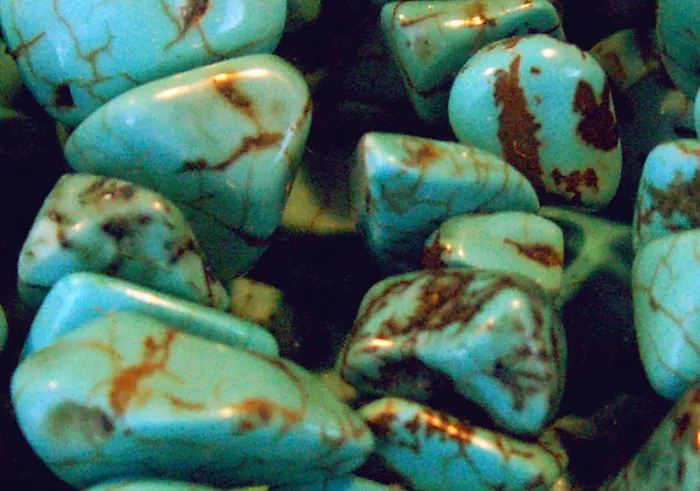Turquoise is a captivating color that blends blue and green, evoking images of clear ocean waters and serene skies. This unique hue has fascinated cultures for thousands of years, carrying deep symbolism in art, fashion, spirituality, and psychology.
In this article, we will explore the rich meanings behind the turquoise color. We will discuss its historical significance, cultural interpretations, psychological effects, and modern-day symbolism. By the end, you will understand why turquoise remains one of the most cherished colors in the world.
Introduction to Turquoise Color
Turquoise is a blend of blue and green, sometimes with hints of yellow or gray. The exact shade can vary, ranging from pale sky blue to deep teal. The color is named after the turquoise gemstone, which has been prized for centuries.
This color is often associated with nature—think of tropical waters, peacock feathers, and clear summer skies. Because of its calming yet vibrant energy, turquoise holds special meaning in many cultures.
Historical Significance of Turquoise Color
Turquoise has been valued since ancient times. Different civilizations attributed various meanings to this color.
Ancient Egypt
Egyptians used turquoise in jewelry, amulets, and burial masks.
They believed it symbolized protection, health, and prosperity.
Cleopatra was known to wear turquoise in her elaborate adornments.
Native American Culture
Many Native American tribes, such as the Navajo and Zuni, considered turquoise sacred.
It represented wisdom, strength, and connection to the spirit world.
Warriors wore turquoise for protection in battle.
Persian (Iranian) Culture
Persia (modern-day Iran) was a major source of high-quality turquoise.
The color was associated with heaven and divine favor.
Persian poets described turquoise as a symbol of love and purity.
Tibetan and Buddhist Traditions
In Tibet, turquoise was believed to bring good fortune and ward off evil.
Buddhist art often used turquoise in sacred paintings and statues.
Psychological and Emotional Meaning of Turquoise
Colors influence our emotions and behavior. Turquoise has a unique psychological impact.
Calming and Soothing
Like blue, turquoise has a calming effect on the mind.
It reduces stress and promotes relaxation.
Many spas and wellness centers use turquoise in their décor for this reason.
Clarity and Communication
Turquoise is linked to clear thinking and self-expression.
It helps with honest communication and emotional balance.
People who struggle with speaking their minds may find turquoise empowering.
Creativity and Inspiration
The green undertone in turquoise connects it to growth and creativity.
Artists and writers often use turquoise to stimulate imagination.
Emotional Healing
Turquoise is believed to help heal emotional wounds.
It encourages forgiveness and letting go of negativity.
Turquoise in Spirituality and Healing
Many spiritual traditions associate turquoise with healing and energy work.
Chakra Connection
In yoga and meditation, turquoise is linked to the throat chakra (communication) and the heart chakra (love).
Wearing turquoise jewelry is said to balance these energy centers.
Protection and Positivity
Ancient cultures believed turquoise could ward off evil spirits.
Some people keep turquoise stones in their homes for positive energy.
Physical Healing Properties
Some holistic healers believe turquoise can strengthen the immune system.
It is also thought to help with respiratory issues and inflammation.
Turquoise in Fashion and Design
Turquoise is a popular color in clothing, jewelry, and interior design.
Fashion Trends
Turquoise clothing stands out and gives a fresh, vibrant look.
It is especially popular in summer and beachwear.
Many celebrities wear turquoise on red carpets for a bold yet elegant statement.
Jewelry and Accessories
Turquoise gemstone rings, necklaces, and bracelets are timeless.
Southwestern and bohemian styles often feature turquoise.
Home Décor
Turquoise walls or accents create a peaceful, inviting atmosphere.
It works well in coastal, Mediterranean, and modern interior designs.
Turquoise in Modern Symbolism
Today, turquoise continues to hold meaning in different contexts.
Symbol of Friendship
In some cultures, giving a turquoise gift represents loyalty and strong bonds.
Environmental Awareness
Turquoise is associated with clean water and environmental conservation.
Many eco-friendly brands use turquoise in their logos.
Digital and Branding Use
Tech companies sometimes use turquoise to convey innovation and trust.
Social media platforms like Facebook and Twitter use blue-green tones for a friendly vibe.
How to Use Turquoise in Your Life
If you love turquoise, here are ways to incorporate it into your daily life:
Wear Turquoise Jewelry
Rings, earrings, or bracelets can bring positive energy.
Decorate with Turquoise
Paint an accent wall or add turquoise pillows for a refreshing look.
Meditation with Turquoise
Hold a turquoise stone during meditation for clarity and peace.
Conclusion
Turquoise is more than just a color—it is a symbol of protection, healing, and creativity. From ancient civilizations to modern fashion, its significance remains strong.
Whether you wear it, decorate with it, or simply admire it, turquoise brings a sense of calm and inspiration. Its rich history and deep meaning make it one of the most cherished colors in the world.
Next time you see turquoise, remember its powerful symbolism and let its energy uplift you.
Related topics:
Amethyst vs. Turquoise: Which Gemstone for Your Ring?
Why Cowboys Choose Turquoise Jewelry?


